SEARCH






|
|
|
|


By Editor Marius Cinteză
Published the 13th of November 2020
"I find contentment in imagery contemplation, since I am a dreamer at heart, and, complementary, in the fact that I’ve reached that point when my works are more discussed than my résumé.” – Alexandru Crișan
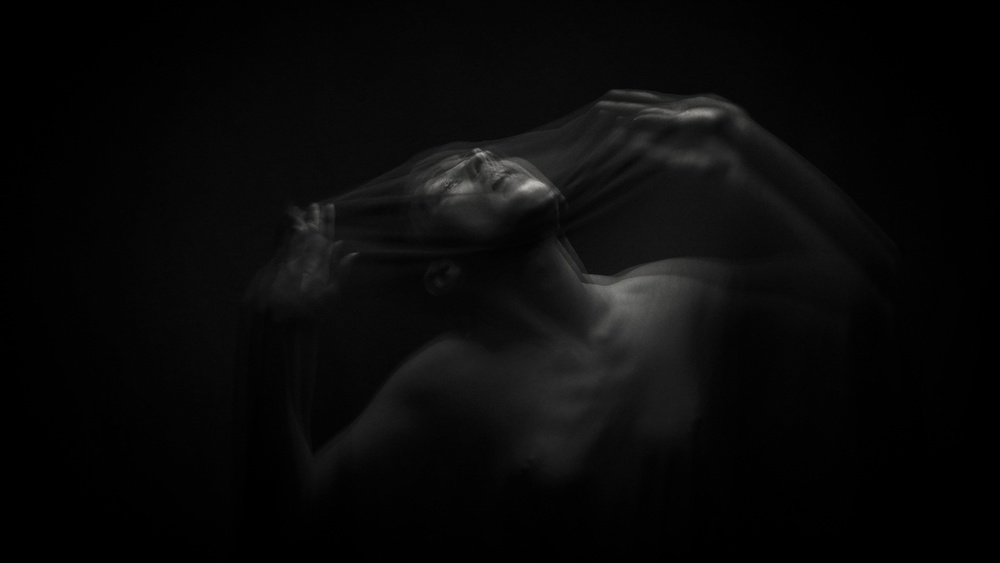
Throw away all my hopes and dreams
Alexandru Crișan is a visual artist based in Bucharest, Romania, and architect by formal education. He was either painting or photographing his entire conscious life and his works are published in art galleries around the world, in peer-reviewed magazines or in privately-owned collections.
The early projects (e.g. ‘My Romania’ (2009-2015), ‘Impossible Worlds’ (2010-2015), ‘Lost Highway’ (2014-2015), ‘Surreal Manipulations’ (2013-2015), ‘Impossible Objects’ (2013-2014), ‘Minimal White’ (2012-2014) or ‘Minimal Black’ (2014-2015)) are surreal interpretations of own understanding over time and space concept. Since 2015, Alexandru decided to get more “tactile” and “Erotoarchitecture” ensued. Then “Alien Structures” and “Impossible Architectures” followed naturally, driven by re-compositions and surreal obsessions. From 2017 onwards, the human condition acquired the main focus and several projects developed speak more about himself: “Dreams”, “Asylum”, “Lust”, “Hypnosis” or “Fairy tales”. These works were awarded in famous international photography contests and you can admire them also in 1x.com Gallery.
I invite you discover more about the man behind the camera, his thoughts and projects in the interview below!
Alex, first of all I would like to thank you so much for taking your time to answer my questions!
To begin, please introduce yourself shortly and tell us more about you, your hobbies or other projects you are involved in!
Thank you for your interest, Marius!
I am a visual artist and architect who, as years went by, became amused by the inherent swags of any self-description. I guess I’m fortunate enough to have others describe me, even though some depictions were rather bemusing: “mood visionary”, “cosmoplastic shutter”, “monochrome man” … I find contentment in imagery contemplation, since I am a dreamer at heart, and, complementary, in the fact that I’ve reached that point when my works are more discussed than my résumé. No need or room for embellishing there!
So there I am, warts and all, and by that I mean, naturally, projects and awards, works and musings, conveniently and rather commercially distilled and decanted in one place: click www.alexandru-crisan.com and you’ll get everything you’ll ever know about the way I tick and the ways I click!
For many of us photography is either a hobby or a way of life. How would you define your relationship with photography?
In one word? TRICKY! The reason for that is a pragmatic one: photography emerged, in fact, as an annex of my creative output. Sure, it’s been an intricate part of my entire conscious “eXistenZ” (sic!), but there’s a stark difference between world appreciation and memory preservation, on the one hand, and artistic expression, on the other. When it came to the latter, painting was my “weapon of choice”, with photography as an auxiliary tool for my works.
The goal was brush-to-canvas, the catalyst was the shutter click.
It was love at first touch, but a steppingstone kind of affection. When I’ve began studying architecture, it seamlessly integrated into the educational process. It turned out to be a different kind of instrument, a volumetric assistant, so to speak, yet a somehow soulless one. From those games of convenience, it grew to insinuate itself into my creative core. It gradually became my artistic go-to place - temporarily or not, I’m not sure... Within the last two decades, it became a distinctive way of expressing entirely different emotions, sometimes contrasting those conveyed by my paintings. And it certainly outgrew its mere augmentative role in my architectural endeavours.
So right now, I feel like this “entity” called photography is having an affair with me, that we went through a lot together – puppy-love and addiction, sharing a bathroom (aka dark room) and threesomes, miscarriages and parenting, and that we’re still flirting, while being in an unsettlingly open relationship…
What would be the most important experience so far that has influenced your steps in photography?
Well, we’re talking about a sinuous road with a lot of stops, all taxing in certain emotional and formative ways. Receiving my first film camera from my father, taking that camera apart and failing to put it back together, my borderline mechanical Humpty-Dumpty moment. Taking a photograph of a dead crow when I was in my early teens. Using my camera to try to impress my (then future) wife – still not sure if that really worked, but I guess it didn’t backfire! The first trip to Cappadocia, the sixth trip to Veneto, the last trip to Chengdu… Switching to digital during a workshop in the southern hills of Romania just to confirm that nude photography is somehow bastardized if there are more than three people in the studio, regardless of one’s gear. A self-portrait in my first five stars hotel – and not a selfie! Nursing the intellectual vertigo that Zaha Hadid threw at me in the MAXXI Museum. Having a breakdown after photographing Auschwitz-Birkenau. Scratching my head at the attempt to shoot one of my own works for a Biennale of Architecture. Switching back to B&W expired stock film. Photos-> storage-> dilemmas! – still unsolved, but crucial to most future choices and techniques! If you’re shopping for the definitive one, more than some light-bulb or heart-beat skipping moments, you’re going to have to ask me this question again, in the last day of my life…
You received your first film camera when you were 12 years old. When have you realised that you would like to follow a career in photography?
Indeed, I have fond memories about getting that Zenit E… I sometimes fantasize about how I would have captured that moment on film: me, grinning in awe, my father smiling… Well, I guess that’s just some sort of a residual self-guiding mechanism.
Skip forward some fiddly 15 years. In the winter of 2008, a win at the Romanian Architecture Annual: it was a photography award, not an architecture one! An eye-opener! Don’t get me wrong, my architectural work was not in shambles or anything like that, I was not looking for some “career change”, it’s just that what started as an amusing side-project was met with instant acclaim. Something like that gives you the confidence to experiment with gusto and to go public with your stories! It was my free pass to trial and error with an audience. And, to this day, it also affords me the hedonism and arrogance to state that I don’t see myself as having a “conventional” professional career in photography!
You see, I’ve experienced almost all the photographic techniques that I am aware of, except for drones, but… and this is the climacteric one: I don’t do events and I don’t do cute! So, there are no wedding gigs or nice colour-bright snapshots anywhere in my future!
How do you maintain and grow your passion for photography?
I would say that the passion for imagery is part of every human being! It’s just that some try to explore it, while others try to tame it. Me, I’m of the former sort, so photography organically became part of my ecosystem. I don’t do anything in particular to keep the flame burning. I’ve never tried to domesticate it, that’s for sure! In fact, most of the times, I get hyperactive within its incandescence. I don’t fear I’m trapped, yet most of the times, I feel that I have no idea what I should do next! So, I start over and over again, from what it feels like scratch, compulsively photographing, not knowing whether it’s some quixotic milestone or just a bad habit! I do try to remind myself that any passion is a never-ending game with one’s self…
Can you please describe in a few words your photographer philosophy and mission?
Here is what I know: in the 21st century, when an artist - any kind of artist, adheres to a philosophy - any philosophy, he/she is lost! The only thing that’s worse than that is when an artist canonizes his/her own epistemology: that’s the summit of all the masturbatorial artistic practices! Alas, the last 15 years flooded our eyes and brains with the residues of an international trend that basically castrated the artistic community and market: every “creative” with a more or less capable camera invariably turned into a “photographer” who mimicked and photostatted with glee, posted/exhibited as ecumenical “auteur”, and, in a plethora of cases, post-coitally invented a suitable, yet only partially internalized storyline to complement the output!
Consequently, to address the second part of your question, if I’d have a mission as a “photographer” (which, once again, I am not in the conventional sense), that would be not to do any of the above!
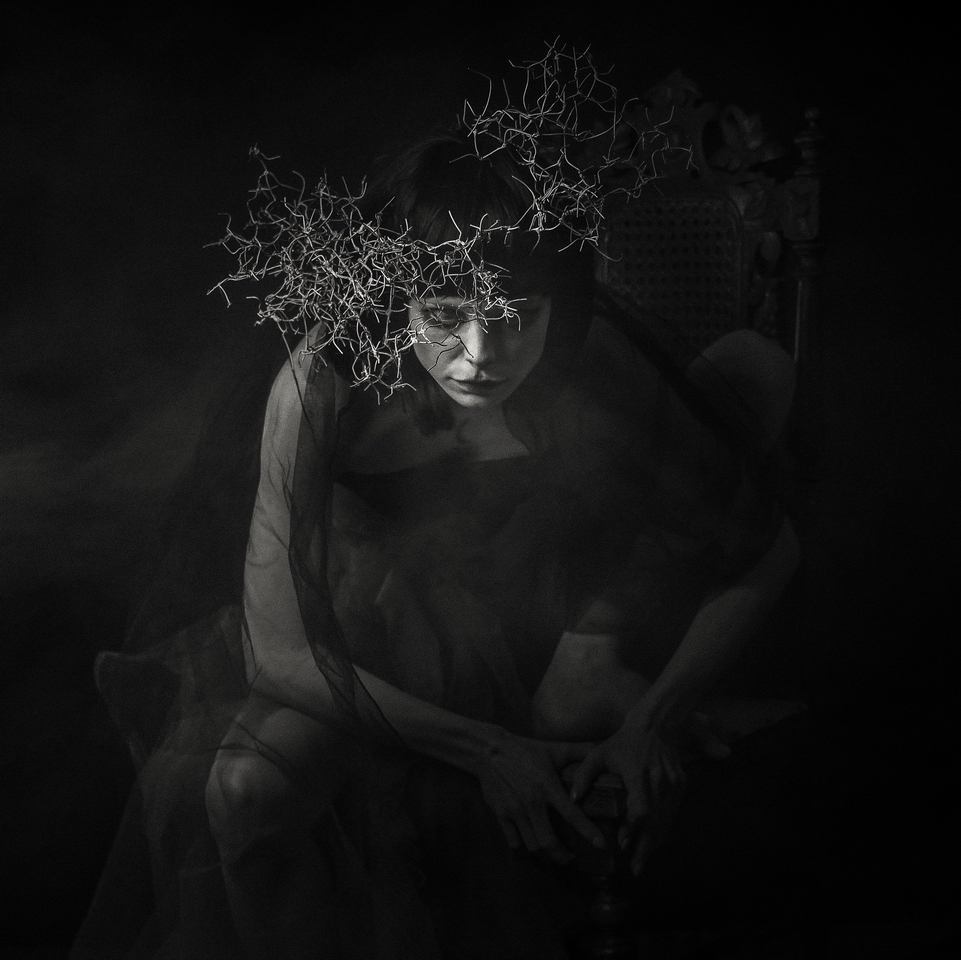
Awakened in the world of dreams
You are an architect by formal education. How do architecture and photography interact and complement each other for you and how did both shaped your photographic vision?
I would say that in about 50% of the visual cases, photography is a “scullion” of architecture. You see exemplifications on a daily basis: real-estate billboards, waiting lounge advertorials, influencers’ bragging rights, and, amusingly, some competitions and compendiums… It’s the commercial underbelly and there’s nothing wrong with it. Except that it’s neither architecture, nor photography, yet it’s what some label as both…
Then you have that roughly 40 % of photography-architecture motley intercourse where architecture willingly takes a back-seat to photography. It’s very personal; too personal, sometimes, to the brink of obscurity.
It’s mostly out-of time and out-of space representations that throw image manipulation into the mix; it’s frequently make-belief 3D renders.
It’s when an artist makes you dream of an “out-of-body” living condition.
It’s about possibility and distortion, about a mythical self and space, it often can be traced back to Cubism and German Expressionism.
It’s award-oriented artistic expression, so you need to browse the mighty online and to follow the awards circuit for this one.
Finally, you have the 10%. You have your Ezra Stoller, Berenice Abbott, Julius Shulman, Wolfgang Sievers, Frederick H. Evans…
So, for me, it’s like this: I loathe the first 50%. I’ve worked within the second tier (and, indeed, won awards galore). And I hope we’re doing this interview because you see me now within that final 10%!
You are drawn into architectural photography. How do you manage to successfully combine space and time and transform these works into pure art?
Well, that would be what one would expect of me, obviously: some sort of “calling” for architectural photography. However, you know by now, from my previous answers, that it is rather incidental for me, in terms of artistic expression. If it works on that level, it’s not because I muse about the time-space nexus with respect to architecture, since I don’t do that. It is an architect’s job to worry - and I can’t possibly overemphasize the term worry! – about time (deadlines and sustainability) and space (functionality, comfort, esthetics and such). An artist should never think in those terms!
So, when I do architectural photography, I rely on what another architect has accomplished. I don’t judge him or her, I celebrate the achievement.
Of course, I understand the intricacies, but I do not prioritize them in my work. So, if the architect did the job right (and they most likely did, otherwise I would not be there with my camera!), he/she already came up with an answer to the time/space question.
As an artist, I do not try to elevate that answer, nor to test it; instead, I become part of that answer, and I want to make you part of it as well. There’s just one caveat: what you see in my work is not the truth of the aforementioned architect, but mine…
Can you please tell us something more about your workflow for architectural photography?
I case the place, of course! It all starts with visual tactility. The thing is, sometimes I have an alter perception of the constructed space, I somehow see it deformed, multiplied, reflected… Then I take my time and, if time is kind enough with me, then space follows suit, so I manage to give you a more or less accurate representation of my vision. In brief, this is how my architectural images are born.
And no, I do not see in this any causality relation with my architectural practice. I guess that this is the reason why most of the “true greats” of the architectural photography are not architects!
Funny thing: I find it almost impossible to photograph my own architectural creations, no matter if we talk about constructed space, a building or a house or some sophisticated interior design. I prefer to call my friends to take some pictures for me. Unbelievable, isn’t it?
Alex, you have won many photography awards and nominations so far! What does this mean for you and your career and how this influenced your artistic vision? What was the most important award so far?
The awards should never interfere with the artistic impulses one should nurture! They are indeed instrumental within a “career as a photographer”, as you called it. But since I don’t have (or pine for!) a “proper” one of those…
On the flip side, awards boot confidence. In some circles, they provide legitimacy. Some argue that a prestigious track-record fosters better sales.
The bottom line is that any artist is always hungry for recognition and relevancy.
So we all play this awards game, because it elevates not who we are, but what we mean to the rest of the world. I would say that when it comes to our identity, no award matters. But when it comes to our message, they all matter.
The most important one so far? If you would not have added that “so far” part, I would have told you that the most important one is the next one, simply because others will see me as still relevant… But since you’ve been so specific, I’ll bite: the one that actually caught me completely off-guard. IPA 2015 – for “Empty Spaces”.
Why, for architectural photography, of course!!!
One can notice the eclectic nature of many of your photography projects. What do you think it takes to make remarkable works in this area?
Ah, one of your trick questions, I see… Very well, what does “remarkable works” mean, then? That they give you a stop-motion feeling at first glance? Is it that lingering after-image? The impact of the more or less esoteric message? Or the compulsion to ask how much they cost, since you think you ought to own them? Perhaps the impulse to actually pay that price, once you find out the stack of awards behind them?
You see, the thing is, “remarkable” boils down to collective appreciation. And it cuts both ways: you get the acclaim, but also the nowadays unstoppable duplication fallout. Without the past decade or so, a hefty part of my works became, a few months after their publication, extremely accurate inspirational fountainheads for “remarkable works” of “famous photographers” …
So, it seems that a very plausible and profitable answer to your question is: a professional-grade copy-paste technique and some guts!
On a lighter note, I would say that, while there is no recipe for a good project, and that each artist should do his/her own thing, there are a few musts: the patience to think the series through; the audacity to photograph what you’ve actually imagined; the coherence to tell the right story without getting sidelined; and the tenacity to start from scratch if one of the first three fail you!
The conceptual nude is also another area of interest for you. What are the main challenges in this genre of photography?
In short, there are two challenges, as you rightly called them: the motions and the emotions – and I’m talking about both the model(s) and the artist. These two are what sets nude photography apart: we are talking about restlessness and volition. Moreover, they are the two factors that differentiate the conceptual nude from erotica (needless to say that pornography disregards both!). Now, I have over five years of nude photography under my belt (too risqué of a pun, perhaps?).
What I can tell you from that experience (again, without gunning for some recipe) is that the artist needs a naked soul to capture the purposefulness of a naked body.
And that you may start from a Marc Lagrange, but you ought to work your way towards an Eadweard Muybridge. And I believe that, if there is indeed a soul to be captured on film, one may find it while taking such a journey. I believe that if you follow this path, you can disregard most of the portraiture fundamentals. You can also attempt the unforgivable: turn a blind eye to the eyes!
Yeah, lately I’m growing rather enamoured with the term “soul” – sometimes it’s a noun, other times it’s a verb… Anyway, it has absolutely nothing to do with religion!
Where do you look for to find inspiration for your works? What inspires you?
I find inspiration in connecting the dots. I’m passionate about “the game behind the game”, so there are dots aplenty to connect! Once you start discovering some improbable interactions, you get a soft spot for specific differentiations – that’s what does it for me when it comes to any work of art. But I guess I’ve already moved on to appreciation and satisfaction, so let’s try and breaking it down. I don’t look for inspiration in other artists’ works, but I do take a close look at the life of the artists I admire. Speaking of connecting the dots, I love Poussin’s works, for instance, but I would not use his perspectives, angles, nuances… I look up to Jean Nouvel, but I deflect light differently… I’m intrigued to the brink of light-headedness by Mapplethorpe, but I don’t do leather… Conversely, I’m wildly curios about their mood swings, drinking habits, lovers… And it’s not some sort of tabloid voyeuristic obsession, but a professional curiosity about their specific soul temperature during the workflow.
Subsequently, I try to steal the soul temperature of the subjects I work with. They all have one: buildings, models, sceneries… And within that feverish crucible, I find the brightest dots - those that almost blind me, hence the aforementioned deformed perspective, I connect them and… well, you can call that inspiration.
How do I recognize inspiration in my own works? Well, there are a few images that need no revisiting, no additional dots, no alibis… They are complete. They have my soul temperature: “Broken dreams”, “Dark Paradise”, “No dream is ever just a dream”, “Myself and I”, “Cachee”, “Only Memories Remains”, “The Disappearance of Ms. D.”.
Alex, I have noticed that your portfolio is almost exclusively B&W. Why do you prefer to express yourself in this manner?
The fact is that I try periodically to do something different, but… Well, it’s rather difficult to conceptualize a work of art in black and white, because you can’t really control the greys. And instinct is one thing, materialization is quite a different kettle of fish… However, I seem to find myself immersed into that light-no light intercourse. Perhaps it is self-conscious boundary setting, to differentiate from my paintings and architectural works. Perhaps it’s old-school comfort and bragging-rights. The thing is, I started with black and white films, I experienced colour film, which I found absolutely stunning, and finally I returned to black and white rolls. Maybe I’ll repeat the cycle. Maybe not. I like the immersive quality of the B&W prints. I love that anti-commercial illusion. Sometimes I feel like colours are crutches. Sometimes I feel colour-blind. Sometimes I day-dream that my REM sleep will give me more greys to work with…
Many are of the opinion that the gear is not very important when the passion for photography is strong. However, can you please share with us what gear do you use (camera, lenses, etc.)?
Nowadays, the nuts and bolts of photography seem irrelevant, indeed – unless you do your work on film, of course! (sic!). You get a flagship smartphone and you’re an overnight author! But seriously, techno-democracy turned gear talk into water cooler trivia, with delusions of grandeur on standby. I have various tools, most of them improper for creative experimentation, but more than adequate for picture-taking. Some of them are branded Hasselblad, Nikon, Bronica, Zeiss Ikon, Flexaret, Rolleiflex… Others are less notorious. Alas, none make art on their own… And absolutely none that I’m yet aware of are capable to take the picture I’m dreaming about when my soul temperature boiled my brain into hyperactive drive... Nonetheless, I do have a nostalgic preference, rooted in versatility and speed, for Bronica.
To add blasphemy to spending injury, the lenses are also not that important to me… but I am, on occasions, partial to the 18, 80 and 200 in focal length.
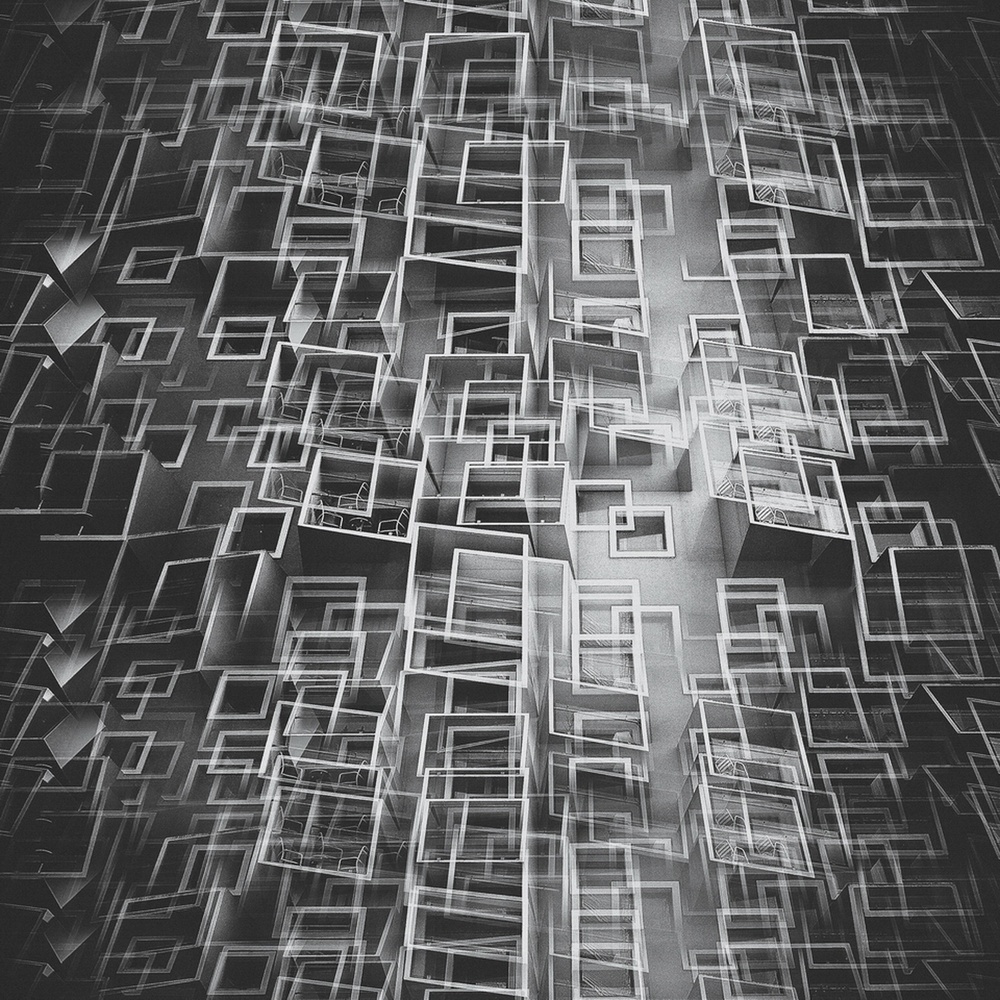
Deconstruction of the unknown balcony
Usually, the photographers have their own favourite piece of work. Can you please shortly present your favourite photo, the story behind it and explain why it is special to you?
Well, then I guess I am an unusual photographer as well, not only an unprofessional one! I don’t have what you’re asking for. Maybe I’m yet to reach that level of misty-eyed discrimination. Maybe I refuse to make that kind of “Sophie’s Choice”. Maybe I’m standing my ground as a perfectionist. Maybe Novalis did a serious number on me and that “Blaue Blume” is what still keeps me in the photography game…
On the other hand, while I lack that “icon” surrogate we’re talking about, I do have images that satisfy my visual appetite more often than others. If I’d have to choose from those presented on 1x (incidentally, not all my good works were approved by the 1x curators, which is a little bit peculiar…), I’d point out: “Blind Light”, “I count the grains of sand…”, “One wish”, “CiNeMA”, “Deconstruction of an unknown balcony”, “Longinus Blade”, “Imprint”.
Who are your favourite photographers or mentors whose works have influenced you and your photography?No mentors. No idols. Bona fide influencers: Michelangelo da Caravaggio, Jean Cocteau, Johannes Vermeer, Man Ray, David Lynch, Theodore Gericault, Andrei Tarkovsky, Gustave Moreau, Jean Nouvel.
We almost reach the end of this interview and I would kindly ask you to share with us your future plans or photographic projects you would like to be involved in.
I would like to embrace time less often, in order to create more. I would like leave photography behind, at least for a while. It’s just a tool for hammering emotions into others, and those emotions get duller and duller with each year. Maybe it is just me getting older, but the art world gets more and more childish with every spike in Internet bandwidth. I feel rather apocalyptic about this point of no return brought about by the restless faux-shutter-clicks and screen-tapings.
I think that, Beauty notwithstanding, one’s thirst for virgin springs is not to be quenched within photography. Not any more.
Thank you, Marius, for inviting me for this 1x interview!
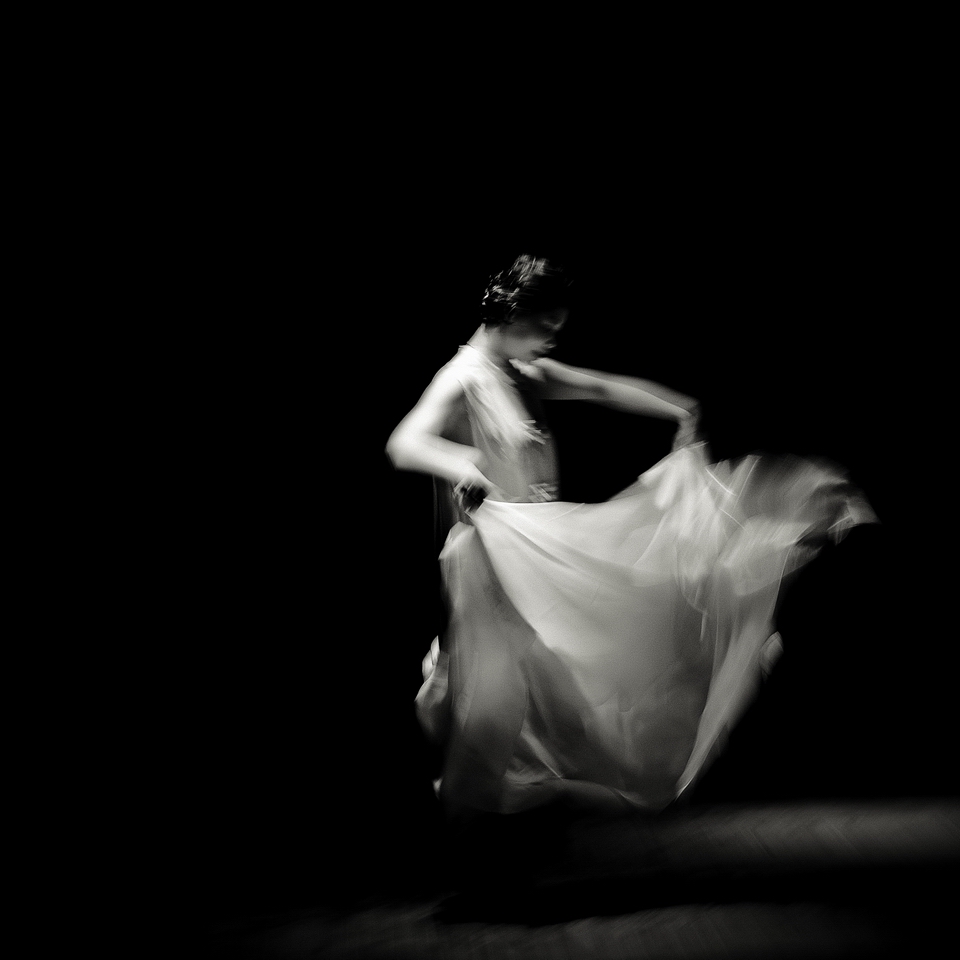
The Dance of the Sugar Plum Fairy
 | Write |
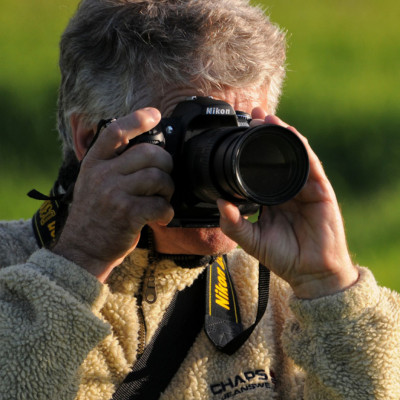 | Vladimir Konkin I read the interview twice. Sincere, deep. Impressed! Thank you Alexandru Crișan for your work! Special thanks to Marius Cintese for the opportunity to learn a lot of new and interesting things. Vladimir. |
 | Marius Cinteza CREW Many thanks, Vladimir, for your kind comments!! |
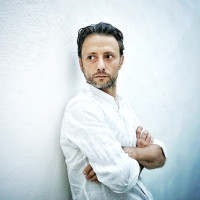 | Alexandru Crisan welcome Vladimir. regards |
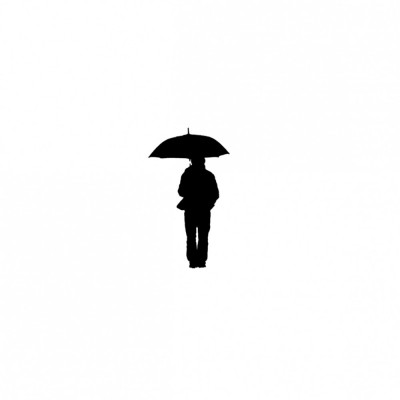 | Massimo Della Latta Complimenti |
 | Alexandru Crisan grazie Massimo |
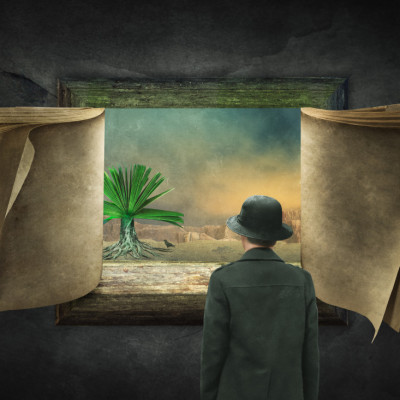 | Biao Huang PRO 非常强大 |
 | Alexandru Crisan 谢谢。 我很高兴 |
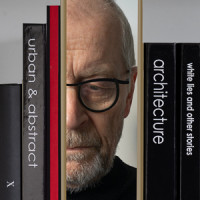 | Luc Vangindertael (laGrange) CREW Wonderful body of work, very inspirational ! Congratulations |
 | Alexandru Crisan many thanks Luc. best regards |
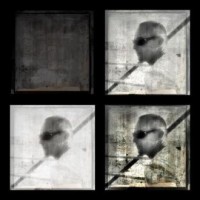 | Paulo Abrantes PRO It was pleasure to read this and somehow those ideas already could be perceived in the pictures by themselves. Best regards, Paulo |
 | Alexandru Crisan thank you Paulo, very glad :) |
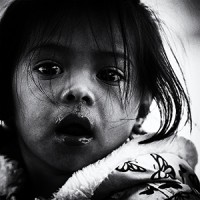 | Jacob Tuinenga Beautiful photo work and creations, thank you for sharing this excellent interview, Yvette and Alexandru!
|
 | Alexandru Crisan many thanks Jacob, much appreciated |
 | Alexandru Crisan thank you Marius Cinteza, 1x.com! |
 | Marius Cinteza CREW My pleasure, Alex!! ;-) |